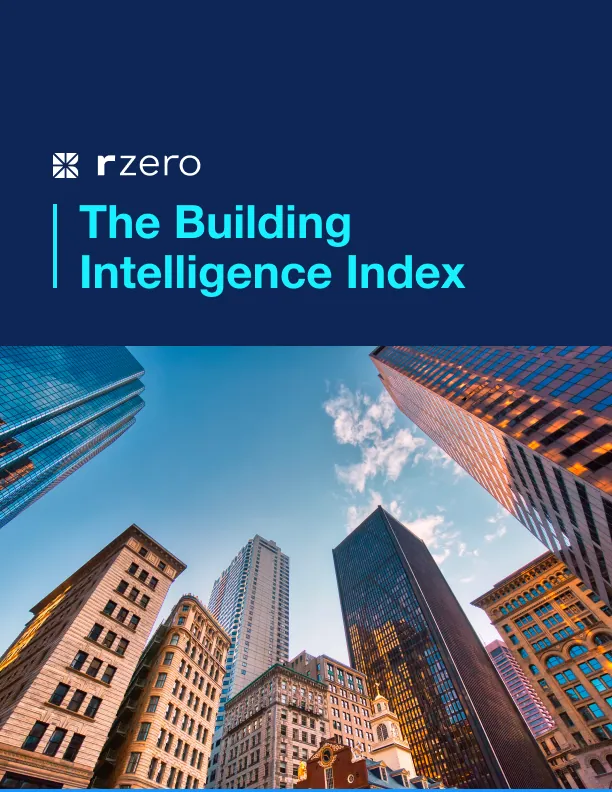
Improving Employee Efficiency with Meeting Room Occupancy Sensors
No matter how much employers or building managers wish there was a magic formula for improving employee efficiency, it remains a complex problem that depends on a lot of factors. issues with scheduling, space management, and even office comfort levels all directly influence the quality of work your employees are capable of. When confronting an ever-changing challenge, however, technological advances like smart, discreet occupancy sensors can help you identify the problems affecting your workforce’s efficiency—and find data-driven solutions.
How Do Meeting Room Occupancy Sensors Work?
Meeting room occupancy sensors use thermal technology —both microbolometers and Passive Infrared (PIR) technology— to sense when a room is occupied and accurately count the number of occupants at a given time. ’s WorkSpace Counter is a small, battery-powered sensor designed to be mounted overhead in an office meeting space. When a person or people enter the room, the counter uses sensors and artificial intelligence to count them in real-time, meaning that office managers or automated messaging systems can monitor meeting room availability remotely.
’s meeting room counter is also designed with privacy in mind and delivers occupancy data completely anonymously. Because Thermal and PIR does not rely on vision-based cameras, any data collected is anonymous from its very inception—and is secure enough to share with third-party apps or services without fear of a breach.
The Benefits Of Meeting Room Occupancy Sensors
Studies estimate that up to 30% of scheduled meetings in the typical workplace don’t actually take place. These so-called “ghost meetings” can add up to wasted time and resources—especially in small to mid-size offices where space is a commodity. Wasted time and space are the epitome of low efficiency, and even a highly motivated workforce struggles to meet demand when working in an inefficient system.
Meeting room scheduling is helpful, but the addition of occupancy sensors from can eliminate ghost meetings altogether, ensuring that scheduled meetings actually happen, and freeing up valuable space if they don’t by allowing another team to fill the gap. This kind of remote accountability management allows for seamless transitions between meetings—and completely eliminates the need to go searching for an open room.
In addition to indicating whether a space is occupied or not, meeting room occupancy sensors can also accurately count the number of employees in a room at a given time. This metric is key to knowing the actual Workspace Utilization levels of a meeting room—or, more simply, how a space is used over time. This kind of data can allow for advanced automation and efficiency when it comes to optimizing your workspace.
For example, in conjunction with their IWMS or building automation software, business owners can use WorkSpace Counters to develop their own smart management system, or use a third-party service to do things like:
- Automatically project availability data to employees and schedule meetings in real-time via internal communications.
- Assign certain rooms to larger or smaller groups depending on what utilization data deems optimal.
- Automatically adjust heating or AC to rooms that are more or less heavily occupied, leading to increased energy efficiency.
- Create custom custodial maps targeting more heavily trafficked rooms, saving money on long-term cleaning costs.
- Create effective social distancing measures based on factors like room capacity, staggered scheduling, or cleaning intervals.
Increasing Employee Efficiency In Real-Time
Increasing employee efficiency can be influenced by removing immediate barriers, like the ghost meeting dilemma, and by optimizing existing systems for a better employee experience. The Covid-19 pandemic especially has shown that workers value flexible workplace strategies when it comes to scheduling and space utilization. Paradoxically, strict scheduling can sometimes lead to decreased efficiency in these cases!
Meeting room occupancy sensors from allow for the kinds of long-term utilization data that can be used to implement new scheduling strategies designed for optimal efficiency while eliminating short-term meeting room space management problems. This kind of data-driven adaptability can also be used to achieve cutting-edge workflow strategies like Activity Based Working or hybrid scheduling. Work principles like these operate under the idea that the true barriers to efficiency are eliminated when employees feel they have the freedom to better define their own space and time to work, and when business owners have the tools to ensure accountability in real-time.
More posts you might like
-

Why should I improve indoor air quality (IAQ) & indoor environmental quality (IEQ) in my buildings?
The Importance of Healthy Indoor Air Quality Clean air and proper ventilation indoors is crucial for the creation of high-performance work places, classrooms, and healthcare environments. It’s also essential in fostering comfort, productivity, and well-being for your building occupants. Imagine walking into a building optimized for health and comfort. The air feels fresh and light. […]
-

How to Improve Indoor Air Quality in Your Buildings
As a building owner or operator, ensuring optimal indoor air quality (IAQ) in your spaces is essential for the well-being and productivity of your tenants and occupants. To help you get started, here’s a guide to ensure you are meeting indoor air quality standards across your real estate portfolio. Understanding Indoor Air Quality Standards To […]
-

The importance of indoor air quality testing in office buildings
In today’s workplace, ensuring a healthy and productive environment for employees is crucial. One of the most significant factors influencing workplace well-being is indoor air quality (IAQ). As part of our focus on smart buildings, R-Zero offers advanced indoor air quality testing solutions like the R-Zero IAQ Monitor, designed specifically for enhancing occupant comfort and […]

